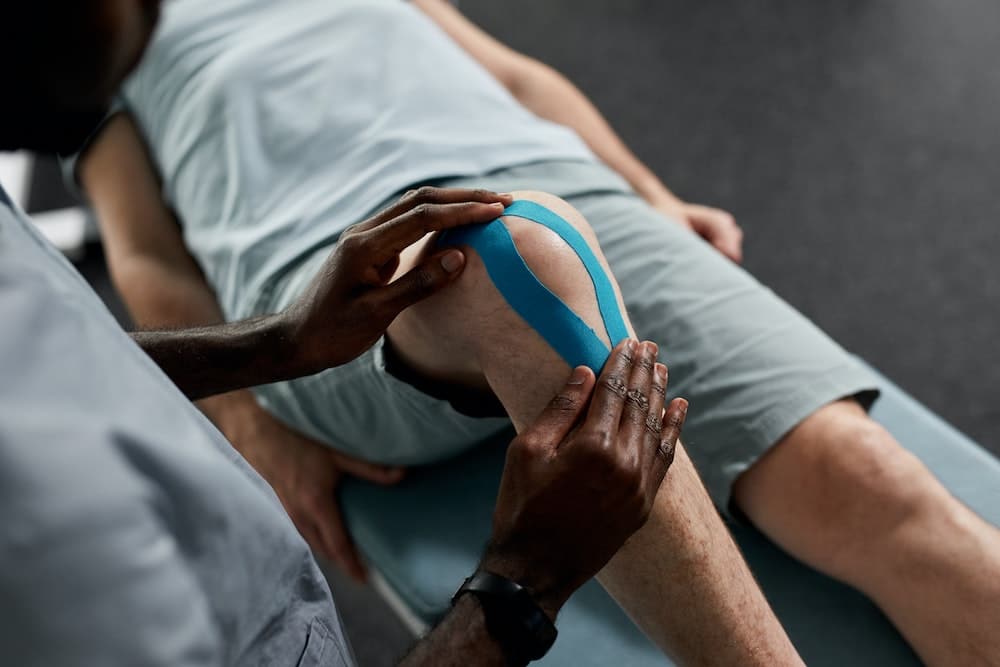How Can Electromyography (EMG) Biofeedback Assist with Rehabilitation in Sprinters?

A common challenge among sprinters is recovering from muscle injuries. Traditional methods often involve physical therapy and rest. Still, emerging technology introduces new ways to enhance these strategies, making the rehabilitation process more efficient and effective. One such technology is electromyography (EMG) biofeedback. This technique could revolutionize how sprinters regain their strength and return to their peak performance.
Understanding Electromyography (EMG)
Before diving into how EMG can aid in rehabilitation, it’s essential to understand what it is. Electromyography is a diagnostic procedure that evaluates the health condition of muscles and the nerve cells that control them, known as motor neurons. It translates these signals into graphs, sounds, or numerical values that a specialist can interpret.
Also read : What’s the Best Approach for Developing Sport-Specific Endurance in Ice Hockey Players?
EMG uses an instrument called an electromyograph to produce a record called an electromyogram. The electromyograph detects the electric potential generated by muscle cells when these cells are electrically or neurologically activated.
Surface EMG (sEMG) is a variation of this technology that records muscle activity from the surface above the muscle on the skin. This has become particularly useful in sports and exercise, offering a non-invasive way to measure how different muscles work during movement and training.
Also to discover : What Strategies Can Combat Athletes Use to Mentally Prepare for Weight Cuts?
The Science Behind EMG Biofeedback
Biofeedback is a process that enables an individual to learn how to change physiological activity for the purposes of improving health and performance. Precise instruments measure physiological activity such as brainwaves, heart function, breathing, muscle activity, and skin temperature. These instruments rapidly and accurately ‘feedback’ information to the user.
When combined with EMG, biofeedback becomes a powerful tool. EMG biofeedback essentially uses the EMG technology to provide real-time insights about muscle activation. It translates the muscle’s electrical signals into a form that the sprinter can see, hear or understand. The goal is to enhance their capacity to control these muscle functions consciously.
EMG Biofeedback in Sprinter Rehabilitation
When it comes to rehabilitation, especially for sprinters, the focus often lies on regaining strength, improving muscle control, and preventing future injuries. This is where EMG biofeedback comes in handy.
In the context of a knee injury, for example, EMG biofeedback can accurately measure the activity of the muscles around the knee, such as the quadriceps and hamstrings. By analyzing this data, therapists can understand which muscles aren’t functioning as they should.
It doesn’t stop there. With EMG biofeedback, you can also identify any compensatory habits that the sprinter may have developed during training or after the injury. This is crucial for effective rehabilitation, as these habits can lead to re-injury or the development of new injuries.
Clinical Studies and Evidence
Several studies have been conducted, investigating the effectiveness of EMG biofeedback in rehabilitation. For instance, a scholarly study available on Google and Crossref highlighted the impact of EMG biofeedback on improving knee muscle strength and function in patients with knee osteoarthritis.
Another research analyzed the impact of EMG biofeedback on stroke patients. It found that patients who underwent biofeedback therapy showed greater improvement in muscle activity and strength compared to those who received usual care.
When it comes to sprinters, specifically, evidence suggests that EMG biofeedback can assist with their rehabilitation. It can help them regain strength and return to their pre-injury performance levels more efficiently.
In conclusion, the role of EMG biofeedback in the rehabilitation of sprinters is promising. With continued research and clinical application, it is likely to become a staple in sports rehabilitation. Remember, the key to successful rehabilitation does not just lie in addressing the injury. It also involves improving overall muscle function, preventing future injuries, and enhancing performance. With EMG biofeedback, these goals become more accessible than ever.
Effective EMG Biofeedback Applications in Rehabilitation
EMG Biofeedback serves as a practical aid in rehabilitation, especially for sprinters. It can be used in various ways to assist in recovery from muscle injuries. One such application is gait analysis. Gait analysis involves the thorough examination of a person’s walking pattern, often with the use of technology to identify any abnormalities. With EMG biofeedback, therapists can monitor the muscle activation patterns during walking. This insight makes it possible to identify and correct any anomalies, ultimately improving the sprinter’s performance.
Another application involves patellofemoral pain, a common condition among sprinters, associated with knee flexion and weakness in the quadriceps. Studies on Google scholar and Crossref have shown that EMG biofeedback can help in reducing this pain by improving muscle activation and strength. The biofeedback allows the sprinters to consciously control their muscle functions, leading to better engagement of the quadriceps and reducing the knee flexion that causes the pain.
EMG Biofeedback can also be applied in EMG guided physical therapy. Here, the therapy sessions are guided by the feedback obtained from the EMG signals. The EMG group of muscles involved in the injury are targeted, and their activity is continuously monitored to guide the therapy process. This ensures that the therapy is precisely tailored to the sprinter’s recovery needs, making it more effective.
The power of EMG biofeedback in rehabilitation extends beyond the physical. It also has psychological benefits. The real-time feedback empowers sprinters with a sense of control over their recovery, boosting their motivation and engagement in the rehabilitation process. This psychological boost can significantly speed up recovery time, getting the sprinters back to their peak performance sooner.
Conclusion: The Future of Rehabilitation with EMG Biofeedback
In light of the compelling evidence from various studies available on platforms such as Google Scholar and Crossref Google, the future of rehabilitation, particularly for sprinters, seems firmly embedded in EMG biofeedback. The ability of this technology to provide real-time insights on muscle activity and facilitate conscious control of muscle functions is revolutionary. It is reshaping how recovery from muscle injuries is approached, making it more efficient and effective.
As technology continues to advance, we can anticipate further developments that will enhance the utility of EMG biofeedback in rehabilitation. For instance, the integration of this technology with advanced gait analysis tools could provide a holistic approach to rehabilitation. This would take into account not only individual muscle function but also the interplay between different muscles during movement.
The beauty of EMG biofeedback lies in its simplicity. It takes the complex signals generated by our muscles and translates them into simple, understandable feedback. This empowers sprinters, giving them a sense of control over their recovery. The result is a faster return to peak performance and a reduction in the risk of future injuries.
The key takeaway from this article is that EMG biofeedback is a promising tool for the rehabilitation of sprinters. However, as with any intervention, it should be used as part of a comprehensive rehabilitation approach that includes physical therapy, strength training, and other relevant practices. With such an approach, sprinters can bounce back from injuries better and faster, ready to conquer the track again.
